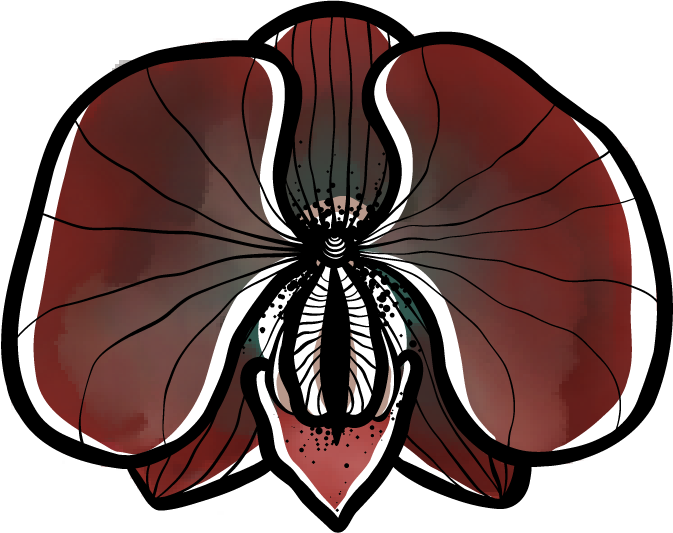We often lack the words to explain difficult concepts to young children.
Heartbreak. Selfishness. Deceit. As adults we must contend with these while also trying to protect our children from, or prepare them for the experience of these realities. Enter the fairy tale.
The Hans Christen Andersen story, The Little Mermaid, (I won’t be talking about the big D version here but Revisionist History does a great breakdown of its unique problems) is an example of such a story. Easily one of the most tragic of children’s tales, it warns us about the dangers of desire and the ways that following our deepest wants leads to self-destruction.
Andersen wasn’t all wrong; he just wasn’t all right. I agree that working with desire is like playing with fire, but the simplified moral of this story is as representative of the nature of desire as sea foam is of the whole ocean.
Desire that Drowns
To understand Andersen’s perspective, let’s meet the little mermaid, at the moment she has decided to forgo her life underwater for the chance for love on land. She is swimming to the sea witch’s house when she passes over a forest of strange creatures called polypi.
“…they looked like serpents with a hundred heads growing out of the ground. The branches were long slimy arms, with fingers like flexible worms, moving limb after limb from the root to the top…She saw that each held in its grasp something it had seized with its numerous little arms, as if they were iron bands. The white skeletons of human beings who had perished at sea, and had sunk down into the deep waters, skeletons of land animals, oars, rudders, and chests of ships were lying tightly grasped by their clinging arms; even a little mermaid, whom they had caught and strangled.”
It’s true, desire can be as binding as the polypi fingers. It can grasp and drown. It can be blind and obsessive. It makes us want things that we have no business wanting and sometimes it can be as destructive as an atom bomb.
But if the divine is within everything, including us and our irrational desires, how can our lust for something always be bad?
The answer comes in understanding the tragic inspiration for this story.
Hans’s Tender Heart
Andersen, who lived in the early 1800s, lived a life filled with tragedy. Just before he wrote The Little Mermaid he had fallen in love with a man, the son of his benefactor. Given the time in which he lived, it comes as no surprise that his friend rebuked Andersen and married a woman.
The Little Mermaid is a story of Andersen’s unrequited love, the kind of love that, at that time, was not publicly acknowledged. We have to wonder if the mermaid’s willingness to settle for crumbs of affection (she sleeps on a velvet cushion outside the prince’s door and dances for the prince even though “each time her foot touched the floor it seemed as if she trod on sharp knives”) were inspired by Andersen’s desperation to be part of his love’s life at any cost.
We will never know Andersen’s full love story, but we know that he loved a man in a time in which his love was a felony and a sin. We know he was devastated and wrote this tale to suture his wound. But the danger of the story is Andersen’s warning against loving too much. In his experience, desire pulls us under like an ocean swell.
If Andersen were my client, I would offer this: What if his desire did not fail? What if it was the cultural ignorance — and religious beliefs that encouraged suppression — that failed him?
What, then, would he say about the power of desire?
Yoga’s Surprising Connection to The Little Mermaid
When I first began to study yoga and other forms of spirituality, I often heard teachers say things like this: desire leads to suffering; freedom is having none. But like the first time I read The Little Mermaid, it felt like a piece of the story was missing. I went deeper, and I found teachings about desire that are as rich in shadow and light as a coral reef.
If Andersen were a seeker like me, he might have discovered the depth of desire. It could have transformed The Little Mermaid into a story that shares three truths about desire that I work with as I swim over the polypi:
- All desires deserve to be explored. Suppression leads to obsession. Every desire, whether outlandish, holy, or banal, tells us something about who we are and why we have taken form. If the little mermaid had been able to openly share her love for the human world without everyone shushing her, she might not have become obsessed with a prince who did not love her. Or, maybe she would have found friends other than the sea witch who could help her realize her dream.
- Some desires deserve action. Knowing when and on what to act requires discernment and courage. Discernment teaches us to honor right timing and ethics (which are different from cultural mores). Yet a discerning mind also knows that the ego will always avoid risk, so we must mine courage and use it when it’s time to move.
- We may not get what we want. Even if we exercise discernment and courage, we don’t always get what we want. We don’t know all the reasons for this. As Andersen (and the little mermaid) found, sometimes we can love someone who isn’t fit to hold our hearts. Maybe the story would have shifted if Andersen had realized that he was worth far more than what his romantic interest could offer.
The Redemption
In my work as a wisdom guide I have seen countless examples of the ways that desires shape us — they have tremendous creative or destructive potential. Each of them is a map to our inner selves. Our power is not in getting everything we want, but in uncovering who we really are in the process of wishing.
Andersen suffered, no doubt. But his desires didn’t create the danger, the culture did. And while we can acknowledge Andersen’s desire to warn children against the dangers of going after what’s in their hearts, we have to admit that it’s a story that we have outgrown.
Folk and fairy tales like this one are powerful tools. They shape us in good and bad ways. However, we make an even stronger mold by exploring what’s written in between the lines. Naming the half-truths and limited beliefs in The Little Mermaid gives us what the author never had — freedom from them.





